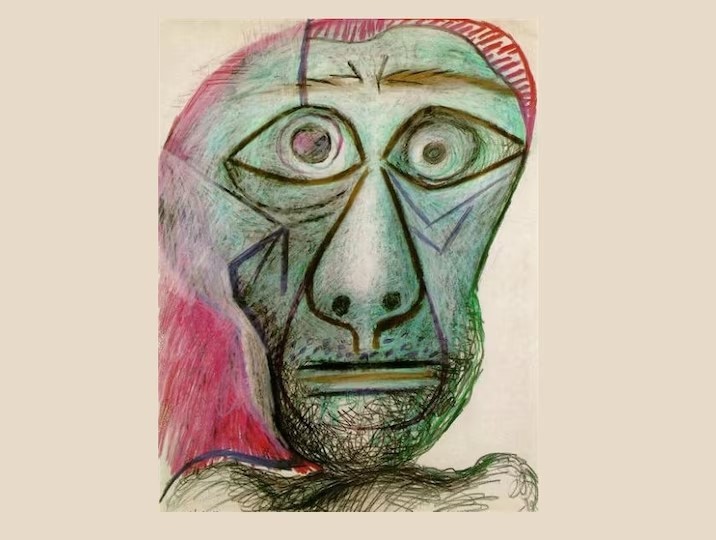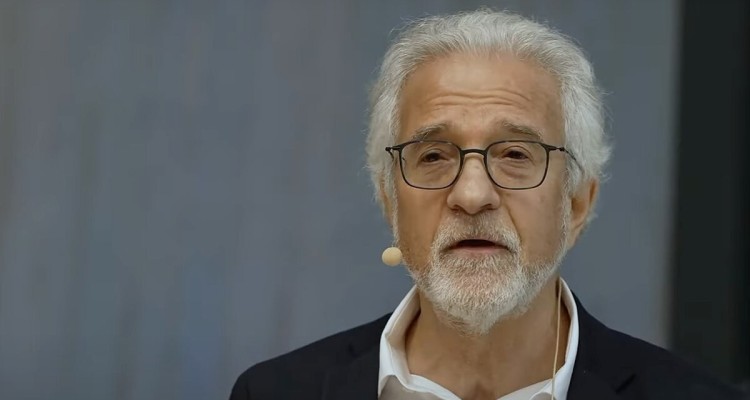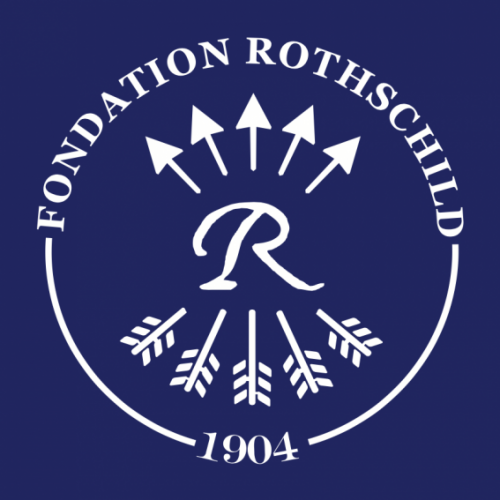Should a Jew who transgresses the Shabbat without being aware of his existence atone for it? Starting from the problem of a self-conscious Jewishness, Ivan Segré examines the bipolarity of Jewish identity, between the facticity of genealogical inscription and the radicality of subjective affirmation. In so doing, he sheds light on the Jewish articulation between individual and collective emancipation: it was not because he knew he was Jewish that Moses decided to leave Pharaoh’s house, but in doing so, he already was…

The question of Jewish identity can be approached in many ways, from a legal (halakhic) approach to “who is Jewish” to the multiplicity of historical, cultural, political and social forms of Jewish existence.
It is also possible to approach the question from a rigorously conceptual angle. In this case, the challenge is to question Jewish identity on the basis of the founding corpus, the Bible and the Talmud. And if we are to embrace the Torah with a single glance, the singularity of Jewish identity lies in its articulation with two founding events: Abraham’s departure “to the land I will show you” (Genesis) and the exit from Egypt (Exodus).
This double foundation conceals a lesson: in Judaism, the question of identity is linked to that of individual and collective emancipation. This is undoubtedly the first reason why the Jewish singularity has a universal value, in the sense that the prophets evoke a “light for the nations”.
With this in mind, we’d like to examine a statement in the Talmud that defines Jewish identity in terms of two poles, one purely genealogical, the other purely subjective.
In the Talmudic treatise Shabbat, folio 68, a discussion pits two of the principal masters of Eretz-Israel Judaism (called “Palestinian” in academic parlance) against two of the principal masters of Babylonian Judaism. Such an unusual arrangement underlines the importance of the question posed. It concerns a fundamental notion: transgressing the law without being aware of it (be-shogeg).
On the Sabbath, for example, gardening is forbidden; if Levi nevertheless gardens, because he has forgotten that today is the Shabbat, then he has acted be-shoggeg, without being aware that he is transgressing the Shabbat prohibition. In this case, he must bring a sacrifice to the Temple to atone, repair or redeem his unconsciousness, i.e. the fact that he forgot that today was the Shabbat.
The question debated by these Talmudic masters is: what about a Jew who has ignored the very principle of the Shabbat, i.e. who has never known that there is a day called “Shabbat” on which no gardening takes place? Does he have to make an expiatory sacrifice to make up for his unawareness? Or is there an unawareness, and therefore a requirement for atonement, only if he knew, at some point in his conscious existence, that there was such a day called ” Shabbat ” and then forgot about it?
Or, to put it in Heideggerian terms, does the forgetting of the question of being presuppose that one was at least once inhabited by this question, and then forgot it, or does the forgetting of this question apply even without the question ever having been consciously asked?
According to Rav and Shmuel, teachers in Babylonia, a Jew who never knew that there was a Shabbat must nevertheless, after learning about it, make an expiatory sacrifice in reparation for all the Shabbat days of which he was unaware. On the other hand, according to Rabbi Yohanan and Rech Laquich, teachers in the Land of Israel, in a case like this, unawareness of the Shabbat is not significant, since the Jew in question was never aware of the Shabbat, so there was no forgetting.
In the Talmud, a question only arises if there’s a concrete case in which the terms of the question can be put together. How can we concretely situate the case in question, that of a “Jew” who would never have known anything about a day called ” Shabbat “? The Talmud’s answer is: “an infant kidnapped among idolaters and a convert who converted among idolaters”.
In defining the textbook case in question, the Talmud defines Jewish identity in the strictest, or minimal, sense, i.e. once this identity has been reduced to its irrefragable existential skeleton, its founding “rib”, and from where one can continue to build up. And this minimal identity is thus dual: either “a kidnapped infant among idolaters”, or “a convert who has converted among idolaters”.
The case of the “infant kidnapped among idolaters” is immediately clear and distinct: a Jewish man and a Jewish woman – say Amram and Jokebed – had a child who, shortly after birth, was kidnapped and then brought up among idolaters. He remains the child of Jokebed and Amram, a Jew in his own right, although he does not know he’s Jewish (since he knows nothing about his progenitors) and may even be unaware of the existence of Jews (since he grew up in an idolatrous world). One fine day, when he rejoins the Jewish community and learns of the existence of the ” Shabbat “, does he have to make an expiatory sacrifice?
This first pole of Jewish identity sheds light on the rigorously and irreversibly genealogical significance of the name “Israel”: a child fathered by Jewish parents (or at least by a Jewish mother) is Jewish. This is one of the two dimensions of Jewish existence. Benny Lévy, in Être juif (Verdier, 2003), has proposed to call this first pole of “Jewish facticity” by the name of “Israel”.
But there is another pole, that of the “convert who converted among the idolaters”. And this second term of the theoretical couple in question posed a formidable problem for medieval Talmud commentators: what is the case of this “convert who converted among idolaters”, so much so that he became a “Jew” without learning anything about a day called ” Shabbat “?
The first instinct when faced with a difficulty like this is to consult the commentary of Rashi (11th century). But on this subject, Rashi, probably deliberately, says nothing, leaving the student to think for himself. So let’s see what the Tosafists have to say.
According to the Tosafists (12th century), whose methodology, modes of conceptualization and conclusions essentially determined later rabbinic thinking on Talmudic studies and jurisprudence, any conversion to Judaism presupposes the presence of three Jews, or rabbinical tribunal, in addition to circumcision (in the case of a man) and immersion in a ritual bath. This is indeed an explicit teaching of tractate Yevamot, folios 46 and 47. A teaching by Rabbi Yehuda, folio 47a of the same tractate, even specifies that a conversion must be carried out before a rabbinical court, as a conversion “from self to self” is worthless. In other words, a conversion in one’s soul and conscience is only effective if carried out in the presence of (three) Jews.
The problem facing the Tosafists in tractate Shabbat folio 68 is therefore that this “convert who converted among idolaters” appears, at first glance, to be a case of a conversion “from self to self”, since if we take the statement literally, his conversion is not carried out in the presence of Jews but in an environment composed exclusively of idolaters. In other words, a person born of idolatrous parents, who grew up in an idolatrous world, frees himself from it and subjectively adopts the name Israel, to the point of becoming “Jewish”. However, according to tractate Yevamot 47, such a conversion “from self to self”, without the presence of three Jews making up a rabbinical tribunal, is not admissible. So how do we explain that in the case of this “convert who converted among idolaters”, his conversion is effective, so much so that the principal masters of Palestinian and Babylonian Judaism ask, in tractate Shabbat 68, whether or not such a “convert” must bring an expiatory sacrifice (once he has become aware, some time after his conversion, of the existence of a day called ” Shabbat “)? Since one must be a “Jew” (or an “Israel” in the Talmudic lexicon) to be concerned by the prohibitions relating to the Shabbat day, the question can only arise if these Talmudic masters recognize in him a “Jew” in the same way as they recognize the child of Amram and Jokebed, who was kidnapped by idolaters, as “Jewish”.
To resolve the apparent contradiction between the teaching of tractate Shabbbat 68 and that of Yevamot 47, the Tosafists explain that in the case of this singular convert “among idolaters”, there was a conversion in due form, i.e. before a rabbinical court. But in this case, how can we explain the “convert’s” ignorance of the Shabbat? The Tosafists answer, obligingly, that the rabbinical court failed to teach him about the Shabbat.
Can we be satisfied with this explanation? In our opinion, the Tosafists’ commentary underlines the difficulty rather than resolving it. For if this is a conversion before a rabbinical court, why mention a “convert who converted among idolaters”? Moreover, what would be the point of the Talmud using this second case, that of a rabbinical court that fails to teach a convert about the Shabbat, then abandons him among the idolaters, alone, ignorant of everything? Since the question that matters to the Talmud is that of a Jew unaware of his Jewishness (and therefore unaware of his relationship to the Shabbat), the first case suffices. So if it’s important to associate the case of the kidnapped infant with another case, it’s not because we want to use every possible and imaginable configuration, but because we want to grasp the irrefragable backbone of Jewish identity. But what sense would it make to envisage three Jews passing through an idolatrous world, converting an individual without teaching him anything, and then leaving straight away? This second case, apart from its eccentricity and empirical inconsistency, has no theoretical necessity in itself, any more than it has existential necessity. Nevertheless, according to the Tosafists, it must be explained in this way, otherwise the teaching of tractate Shabbat 68 would contradict that of tractate Yevamot 47. The teachings of the Talmud, like Euclidean geometry, constitute a system.
Faced with the same problem, Maimonides (12th century) tried to soften the blow. In his codification of the Talmud (Halakhot Shegaggot, Chap. 7, Halakha 2), he writes that the two cases in question are those of “a child kidnapped from among idolaters and a child converted from among idolaters”. Commenting on Maimonides’ text, Rabbi Yosef Caro is quick to point out the anomaly: the Talmud distinguishes between the “infant” kidnapped from among the idolaters on the one hand, and the “convert” who converted from among the idolaters on the other. The second case is not, therefore, a priori, that of a “child” but equally, or exclusively, that of an adult. Rabbi Yossef Caro concludes that, according to Maimonides, had it been an adult, a rabbinical court worthy of the name would necessarily have taught him the existence of the Shabbat. And this would be the reason why Maimonides corrects the text on this point: in the case of a child, it is understandable that he would not have been taught anything, or that the child being under the age of reason, the teaching is considered null and void, so that it is equivalent to the case of the kidnapped infant. But in the case of an adult, this would make no sense.
The fact remains that the versions of the Talmudic text are unanimous: we are talking about a “convert”, not a “converted child”. And in the first case, it’s an “infant” (tinok), not a “child” (katan). The Talmud thus clearly distinguishes between the two cases: one is a “kidnapped infant”, with no conscious memory of his progenitors; the other is “a convert who has converted”, denoting the personal initiative of an adult. What’s more, if the slope is smoothed here, it’s even steeper here: how can we explain the fact that, once converted by a rabbinical court, this child is abandoned among the idolaters? Finally, why would the Talmud go looking for a second case that does not meet any theoretical (since it duplicates the first) or existential (since it makes no sense) necessity?
Conversely, the case of the “infant kidnapped among the idolaters” is of rigorous theoretical and existential consistency: it exposes the purely genealogical dimension of the name “Jew”, the individual in question being passively assigned to this name, without any conscious initiative on his part; he is doomed to it by birth, hence the “Jewish facticity” of which Benny Lévy speaks. So why add the case of a convert whose conversion and subsequent abandonment by an apparently eccentric, if not irresponsible, rabbinical court we hardly know how to determine?
Nahmanides (13th century) proposes another explanation, in addition to that put forward by the Tosafists: this would indeed be a person who converted “from self to self” in an idolatrous world, but “who was not made aware that a conversion from self to self is not a conversion”. In other words, according to Nahmanides, it would be possible to adhere to the letter of the Talmud, on condition, however, that the singular conversion of this singular individual would in this case have been validated when it should not have been.
Having learned from the analysis of the main medieval commentators, let’s now return to the Talmudic statement. The individual in question “converted among idolaters”, implying that he acted on his own initiative in an idolatrous world. Whereas the first pole of Jewish identity is that of genealogy, i.e., the case of the infant, irreversibly Jewish despite being kidnapped and raised among idolaters, the second pole would be, to follow the letter of the Talmudic statement, that of personal, singular initiative, which can be supported by nothing other than oneself, since the individual in question was born and lives “among idolaters”.
On one pole there is the indisputable intimate vocation of the individual born of Jewish parents, on another pole there is the individual who, singularly, extraordinarily, in an idolatrous world, has updated the Abrahamic foundation. This, according to the Talmud, is the essential duality of the name “Israel”: at one pole Abraham, at the other the infant captured by idolaters, namely Moses.
The first term of the theoretical couple in question is therefore the individual who, born of Jewish parents but kidnapped at birth by idolaters, learns one day that he is a Jew, that he is a child of Israel. To be Jewish, in this sense, is to be the child of Jokebed and Amram, which he has always been in his very being, in his most intimate reality, but without consciously knowing it. In this case, do they have to make an atoning sacrifice for having ignored the day of Shabbat, or must they have known at some point in their conscious life that they are Jewish and that the Shabbat exists, in order to be liable for such an atoning sacrifice?
The second pole of Jewish identity, the alter ego of the child born of Jewish parents, is therefore “a convert who has converted among idolaters”. And if we follow the Talmud’s letter and logic, the case is indeed that of an idolater who becomes an “Israel” in his own right, through his own existential journey. Indeed, if he “converted among idolaters”, it is because he lived in an idolatrous world where there was no Jewish otherness, no Jew from whom to learn to desire to be a Jew, nor even from whom to learn that such a nomination – “Jew” or “Israel” – exists, just as the day of Shabbat exists. And yet, he “converted”. This does not necessarily mean that he has “converted” to Judaism, since he is unaware of Israel’s historical existence. What it does mean, at the very least, is that he has made himself an absolute stranger to the idolatrous world in which he lives – and, in this sense, has become “Jewish”.
The logico-existential point of identity between “the kidnapped infant” and “the convert among the idolaters” is that both are rigorously unaware of being “Jewish”.
The difference, however, is that “the infant kidnapped from among the idolaters” is “Jewish” by virtue of being the child of Jokebed and Amram, whereas “the convert who converted from among the idolaters” is “Jewish” by virtue of his own subjective creation, i.e., by virtue of a singular existential journey by which he has made himself absolutely foreign to the idolatrous world. These, then, would be the two poles of Jewish identity which, inextricably linked to one another, would open the door to the inner thought of the name “Israel”: the kidnapped infant, genealogically “Jewish”, and the convert among the idolaters, subjectively “Jewish”.
Let’s now turn to the Tosafists’ objection. To be effective, a conversion to Judaism presupposes a rabbinical tribunal, i.e. the presence of three Jews, in addition to circumcision and immersion. Now, if such a ritual is indeed necessary, as tractate Yevamot 47 teaches, it renders impossible, or “illegal”, the case of the convert who, among the idolaters, would have converted “from self to self” by subjectively tearing himself away from the world in which he lives, since in his case there is neither a rabbinical tribunal nor a rite of any kind, and for good reason: the convert, in the circumstances, is unaware of the existence of the Shabbat, of circumcision, of ritual bathing and even, if we look at things rigorously, of “the Jews” and the name “Israel”!
However, we believe that solving this problem does not require abandoning the theoretical and existential coherence of the Talmudic statement. On the contrary, it is by maintaining it that things become clearer. In the case of Treatise Yevamot, we’re talking about a convert who converted among Israel, i.e., who came into contact with Jews, or was at least informed of Israel’s historical existence, which is why his conversion, in this case, is only admissible if he was converted by a rabbinical court and carried out the rite of conversion (circumcision and ritual bath). But if he converted from self to self, his conversion is not admissible, as Rabbi Yehuda teaches in Yevamot 47a, since he would then have converted to Judaism in defiance of the historical existence of Jews.
On the other hand, in the case of a convert among idolaters, the conversion “from self to self” is effective. He is then named “Israel” by virtue of his own subjective creation, even though there is no rabbinical court, circumcision, ritual bath or Shabbat. Indeed, in this case, he has no knowledge of Israel’s historical otherness, its teachers, its teachings, its forms of ritual existence, etc., since he lives “among idolaters”. Consequently, what counts in this case is exclusively his singular subjective power, through which he has torn himself away from idolatry and made himself a stranger to his world.
The teaching of tractate Yevamot 47 is thus now articulated with that of tractate Shabbat 68, far from contradicting each other. In the case of tractate Yevamot 47, we are dealing with a convert who has somehow encountered Israel’s historical otherness, the “Jewish fact”, which is why his conversion “from self to self” is not valid, even if he has circumcised himself, immersed himself in a ritual bath, etc., because his conversion “from self to self” is then an expression of defiance towards Israel’s historical existence.
In contrast, in the case of tractate Shabbat 68, the “convert who converted among the idolaters”, as the letter of the text indicates, is an individual who has freed himself, by his own subjective power, from idolatry, and this without knowing anything about the historical existence of Israel. Yet he is considered an “Israel” by the Talmudic masters, in the same way as a kidnapped infant, so that if he ever learns of the historical existence of Israel and the Sabbath, and joins “his brothers”, the question arises as to whether he should bring a sacrifice. The “convert among idolaters”, then, is every man or woman who, in a singular way, updates the Abrahamic foundation: “Go for yourself, emancipate yourself from your becoming a human animal, emancipate yourself from idolatrous determinisms”.
The two cases in question are now articulated in their theoretical and existential necessity: on one pole there is the irrefutable intimate vocation of the individual born of Jewish parents, on another pole there is the individual who, singularly, extraordinarily, in an idolatrous world, has updated the Abrahamic foundation. This, according to the Talmud, is the essential duality of the name “Israel”: at one pole Abraham, at the other the infant captured by idolaters, namely Moses.
But how can such a teaching be formalized in jurisprudential terms? Medieval commentators seem to have stumbled on this point: it is impossible to recognize an individual as “Jewish” on the sole criterion of his subjective emancipation from the idolatrous world. And indeed, in his case, no hypothetical birthmark on the right buttock could prove the point! In this sense, the case of the “convert who converted among idolaters” is a reality that resists all legal formalization. The fact remains that the legal objectification of Jewish existence (medieval codification and its modern extensions) cannot have the last word. For the Talmud is a thought-practice, not a code of laws. And in terms of thought-practice, tractate Shabbat 68 delivers a most intimate and injunctive biblical-talmudic teaching: the infant Moses and the adult Abraham are the two poles of Jewish identity.
Abraham, then, is the pole of radical subjectivation, of the subjective capacity to found from nothing, while the infant torn from his Jewish parents Amram and Jokebed, namely “Moses the Egyptian”, is the pole of the injunction, from the intimate, to return to Israel: As an infant who was handed over to Pharaoh’s daughter to escape the death decree, Moses was named by her; he then lived in the house of the master of Egypt, until, having become a man, he responded to the summons from within: “Moses had grown up, he went out to his kinsfolk and witnessed their labors”.
Jewish identity thus unites two poles: one stems from the unconsciousness of a birth irreversibly devoted to the name “Jew”, the other from pure conscious subjectivation, without which there can be no truly meaningful human adventure. And contrary to what the Christian argument, after Paul of Tarsus, has ceaselessly brandished against Israel, the story of Moses illustrates precisely the essential conjunction of these two poles, birth and subjectivation, since it is the Abrahamic departure that Moses, now a man, prolongs by joining “his brothers” – which first required, in his case, subjectivating, from oneself to oneself, the existential necessity of leaving “Pharaoh’s house”.
Ivan Segré









